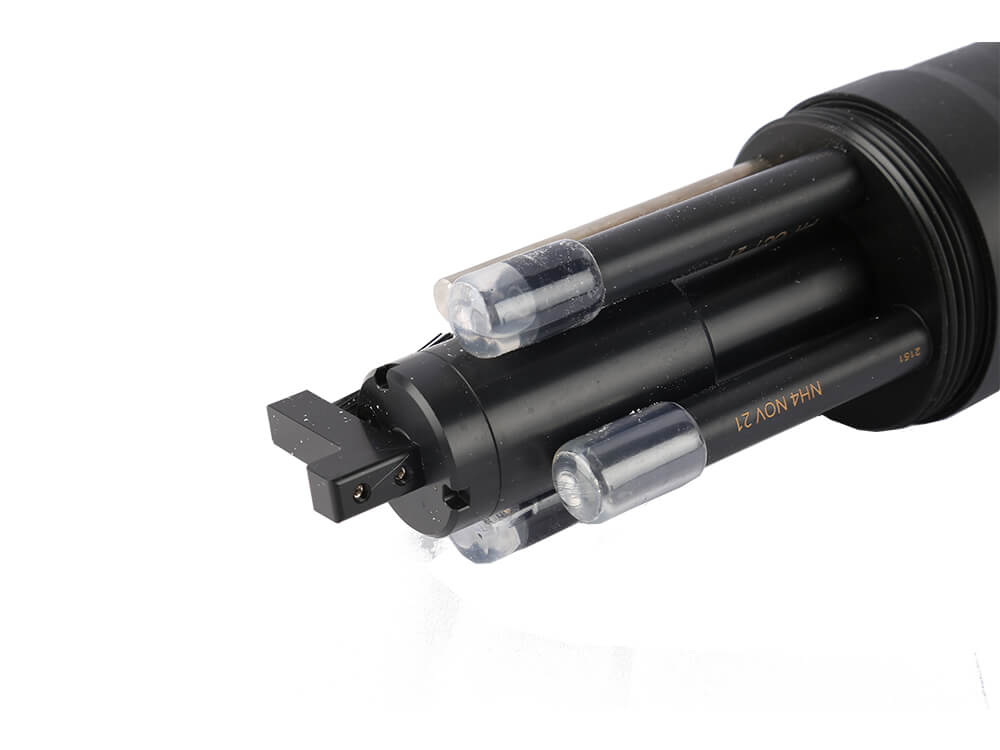The Future of Environmental Monitoring: Harnessing the Power of Dissolved Oxygen Sensors

Environmental monitoring has become more critical than ever as human activities continue to affect the planet’s ecosystems. In particular, aquatic environments are under increasing pressure from pollution, climate change, and industrialization. Ammonia nitrogen sensor To safeguard these valuable ecosystems, scientists, environmental managers, and conservationists need accurate, real-time data to monitor the health of water bodies. Among the most essential parameters for assessing aquatic health is dissolved oxygen (DO) levels, which directly influence the survival of aquatic organisms and the overall well-being of ecosystems.
Dissolved oxygen sensors have emerged as a revolutionary tool in the field of environmental monitoring. By measuring oxygen levels in real time, these sensors provide a wealth of information that is crucial for understanding the status of aquatic ecosystems. This article explores the role of dissolved oxygen sensors in shaping the future of environmental monitoring and how they can help us address pressing ecological challenges.
The Significance of Dissolved Oxygen in Water Quality
Dissolved oxygen refers to the oxygen molecules that are present in water and available for use by aquatic organisms, such as fish, crustaceans, and microorganisms. Oxygen is a vital component for cellular respiration in these organisms, and its concentration in water plays a direct role in sustaining life in aquatic environments. A sufficient amount of dissolved oxygen is required to support healthy biodiversity, including fish populations, plants, and other organisms that contribute to the ecological balance.
The concentration of DO is influenced by several factors, including water temperature, salinity, atmospheric pressure, and the rate of oxygen consumption by aquatic life and microorganisms. When oxygen levels fall too low, it can lead to hypoxia, a condition where the water contains insufficient oxygen to support most marine life. This can cause fish kills, disrupt ecosystems, and result in the degradation of water quality. Conversely, high oxygen levels can indicate water pollution, especially if excess nutrients or chemical pollutants are present.
Given its critical role in water quality, measuring dissolved oxygen has become a central focus in environmental monitoring.
The Rise of Dissolved Oxygen Sensors
In the past, measuring dissolved oxygen was a challenging task that required labor-intensive methods. Traditional methods, such as the Winkler titration, involved taking water samples and performing chemical analyses, which only provided snapshots of oxygen levels at specific times. While useful, these techniques were not ideal for continuous, real-time monitoring.
With advancements in sensor technology, the ability to measure dissolved oxygen continuously and accurately has revolutionized environmental monitoring. Today, there are two primary types of dissolved oxygen sensors: electrochemical and optical sensors.
-
Electrochemical Sensors (Clark-type Sensors): Electrochemical sensors, also known as Clark-type electrodes, are widely used in dissolved oxygen measurement. These sensors operate by generating an electrical current in response to the reduction of oxygen molecules at the cathode. The strength of the current is directly proportional to the concentration of dissolved oxygen in the water. Electrochemical sensors are popular for their reliability, low cost, and ability to provide real-time data.
-
Optical Sensors (Luminescent-based Sensors): Optical sensors use a different principle, relying on the quenching effect of oxygen on a fluorescent dye. The dye fluoresces when excited by light, and the presence of oxygen molecules reduces the intensity of the fluorescence. The sensor measures this change in light emission to determine the oxygen concentration. Optical sensors offer significant advantages over electrochemical sensors, including greater stability, minimal maintenance, and longer lifespans. They are also less prone to interference from other substances in the water.
Both types of sensors have contributed significantly to the improvement of dissolved oxygen measurement, enabling more precise, long-term monitoring of aquatic environments.
The Impact of Dissolved Oxygen Sensors on Environmental Monitoring
The advent of dissolved oxygen sensors has expanded the capabilities of environmental monitoring and has proven invaluable in various sectors. Below are some of the key applications and benefits of dissolved oxygen sensors in environmental monitoring.
1. Continuous and Real-time Monitoring
One of the most important advantages of dissolved oxygen sensors is their ability to provide continuous, real-time data on oxygen levels in aquatic environments. Unlike traditional methods, which only offered intermittent readings, modern sensors can continuously monitor oxygen levels and transmit this data to centralized systems. This enables scientists, water managers, and environmental agencies to detect fluctuations in oxygen levels promptly and respond to potential issues in a timely manner.
For example, continuous monitoring allows for the early detection of hypoxic events or algal blooms, which could otherwise go unnoticed until significant ecological damage occurs. The ability to track oxygen levels in real time offers a powerful tool for managing water quality and safeguarding aquatic life.
2. Early Warning Systems for Pollution and Eutrophication
Dissolved oxygen sensors serve as an early warning system for pollution and eutrophication—two major environmental challenges faced by aquatic ecosystems. Eutrophication occurs when excess nutrients, such as nitrogen and phosphorus, enter water bodies, often as a result of agricultural runoff or wastewater discharge. This nutrient overload can lead to harmful algal blooms that deplete oxygen levels, creating hypoxic or anoxic conditions that are harmful to fish and other organisms.
By monitoring dissolved oxygen levels, scientists can identify the early stages of eutrophication and take preventive measures to reduce nutrient inputs before they cause widespread damage. Additionally, sensors can help identify areas of pollution or contamination that may be affecting water quality, allowing for targeted interventions and remedial actions.
3. Aquaculture and Fisheries Management
Dissolved oxygen is a critical parameter in aquaculture and fisheries management. Fish farms rely on maintaining optimal oxygen levels in the water to ensure the health and growth of aquatic species. Dissolved oxygen sensors help aquaculture operators monitor oxygen levels in real time, adjusting aeration systems or water flow to ensure that oxygen concentrations remain within the optimal range.
In fisheries management, dissolved oxygen levels are essential for maintaining the health of fish populations and preserving biodiversity in rivers, lakes, and oceans. By using sensors to monitor oxygen levels, fishery managers can make data-driven decisions that support sustainable fishing practices and ecosystem conservation.
4. Understanding Climate Change Impacts
Climate change is affecting aquatic ecosystems in numerous ways, including changes in water temperature, altered precipitation patterns, and shifts in oxygen solubility. As global temperatures rise, the solubility of oxygen in water decreases, which could exacerbate hypoxic conditions in some regions. Dissolved oxygen sensors allow scientists to track these changes and assess the impact of climate change on water quality and aquatic life.
By monitoring DO levels across different regions and over extended periods, researchers can gain valuable insights into how climate change is influencing aquatic ecosystems and make recommendations for mitigation strategies.
5. Comprehensive Ecosystem Health Assessment
Dissolved oxygen is not just a measure of water quality; it is also a key indicator of overall ecosystem health. By tracking DO levels alongside other water quality parameters, such as temperature, pH, and turbidity, researchers can build a comprehensive picture of an ecosystem’s status. This holistic approach enables a more accurate assessment of biodiversity, ecosystem services, and the impact of human activities on aquatic environments.
The Future of Dissolved Oxygen Sensors
The future of environmental monitoring lies in the integration of advanced sensor technologies, data analytics, and artificial intelligence. In the coming years, we can expect to see even more precise and efficient dissolved oxygen sensors that are capable of providing higher resolution data with less maintenance. Additionally, sensor networks that combine dissolved oxygen readings with other environmental parameters will provide more comprehensive insights into aquatic ecosystems.
The combination of real-time monitoring, advanced data analytics, and predictive modeling will enhance decision-making processes for environmental management, enabling faster and more effective responses to ecological challenges. As technology continues to evolve, dissolved oxygen sensors will play an increasingly important role in the protection and preservation of aquatic ecosystems.
Conclusion
Dissolved oxygen sensors are transforming the way we monitor and manage aquatic environments. Their ability to provide continuous, real-time data on oxygen levels is crucial for assessing water quality, preventing pollution, and ensuring the health of aquatic ecosystems. As environmental challenges grow, the power of dissolved oxygen sensors will continue to play a pivotal role in safeguarding our planet’s water resources and fostering a sustainable future. By harnessing the potential of these sensors, we can ensure that aquatic ecosystems thrive in the face of change and adversity.








